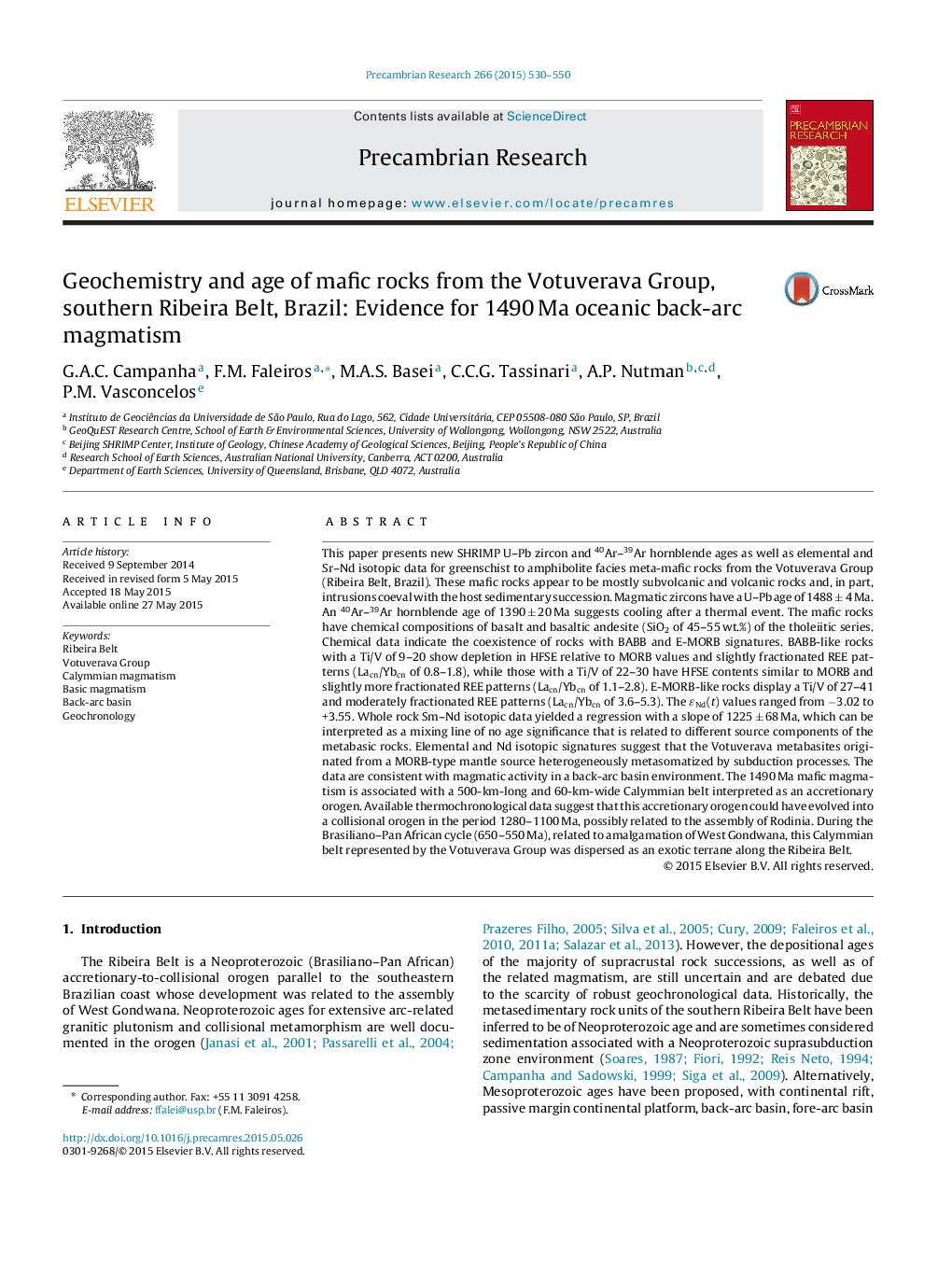| کد مقاله | کد نشریه | سال انتشار | مقاله انگلیسی | نسخه تمام متن |
|---|---|---|---|---|
| 4722557 | 1639609 | 2015 | 21 صفحه PDF | دانلود رایگان |

• We investigate metabasites from the Votuverava Group, Ribeira Belt, Brazil.
• A zircon U–Pb SHRIMP age of 1488 ± 4 Ma is inferred as the time of crystallization.
• Elemental and Nd isotopic data indicate tholeiitic back-arc basin basaltic magmatism.
• The Votuverava Group is an oceanic back-arc component of an accretionary orogen.
• The 1490 Ma accretionary orogen evolved to a 1280–1100 Ma collisional orogen.
This paper presents new SHRIMP U–Pb zircon and 40Ar–39Ar hornblende ages as well as elemental and Sr–Nd isotopic data for greenschist to amphibolite facies meta-mafic rocks from the Votuverava Group (Ribeira Belt, Brazil). These mafic rocks appear to be mostly subvolcanic and volcanic rocks and, in part, intrusions coeval with the host sedimentary succession. Magmatic zircons have a U–Pb age of 1488 ± 4 Ma. An 40Ar–39Ar hornblende age of 1390 ± 20 Ma suggests cooling after a thermal event. The mafic rocks have chemical compositions of basalt and basaltic andesite (SiO2 of 45–55 wt.%) of the tholeiitic series. Chemical data indicate the coexistence of rocks with BABB and E-MORB signatures. BABB-like rocks with a Ti/V of 9–20 show depletion in HFSE relative to MORB values and slightly fractionated REE patterns (Lacn/Ybcn of 0.8–1.8), while those with a Ti/V of 22–30 have HFSE contents similar to MORB and slightly more fractionated REE patterns (Lacn/Ybcn of 1.1–2.8). E-MORB-like rocks display a Ti/V of 27–41 and moderately fractionated REE patterns (Lacn/Ybcn of 3.6–5.3). The ɛNd(t) values ranged from −3.02 to +3.55. Whole rock Sm–Nd isotopic data yielded a regression with a slope of 1225 ± 68 Ma, which can be interpreted as a mixing line of no age significance that is related to different source components of the metabasic rocks. Elemental and Nd isotopic signatures suggest that the Votuverava metabasites originated from a MORB-type mantle source heterogeneously metasomatized by subduction processes. The data are consistent with magmatic activity in a back-arc basin environment. The 1490 Ma mafic magmatism is associated with a 500-km-long and 60-km-wide Calymmian belt interpreted as an accretionary orogen. Available thermochronological data suggest that this accretionary orogen could have evolved into a collisional orogen in the period 1280–1100 Ma, possibly related to the assembly of Rodinia. During the Brasiliano–Pan African cycle (650–550 Ma), related to amalgamation of West Gondwana, this Calymmian belt represented by the Votuverava Group was dispersed as an exotic terrane along the Ribeira Belt.
Journal: Precambrian Research - Volume 266, September 2015, Pages 530–550